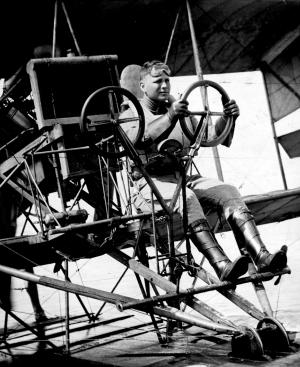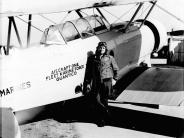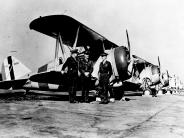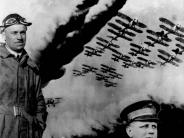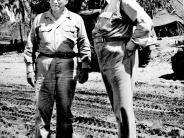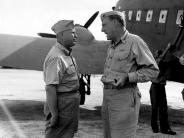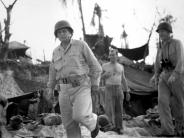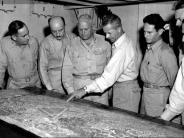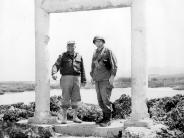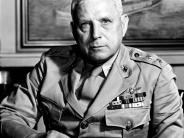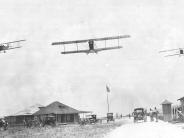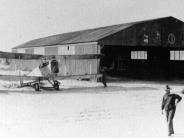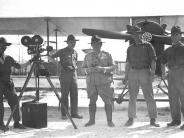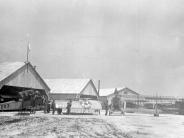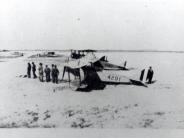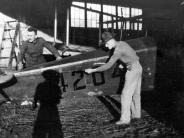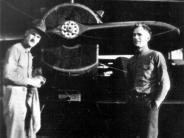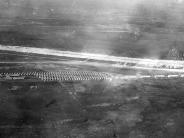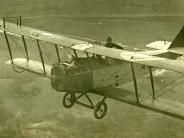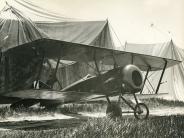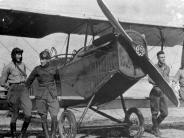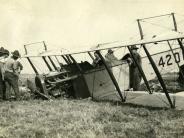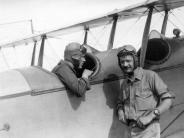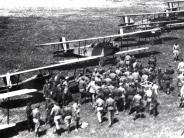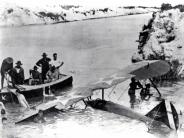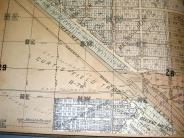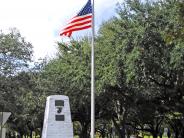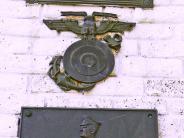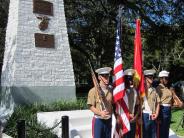Marine Corps Memorial
MARINE CORPS MEMORIAL
On the greenway, Curtiss Parkway and Deer Run
In Memory of
Roy S. Geiger
Captain, U.S. Marine Corps (General Deceased)
First Commanding Officer
Marine Flying Field, Miami, Florida
World War I 1918
Erected in Memory of
First Marine Aviation Force
By the Members of
First Marine Aviation Force
Veterans Association
November 13, 1948
In 1917, Captain (later, General) Roy Geiger of Middleburg, Florida, became the 49th pilot trained by the U.S. Navy, and the fifth flyer for the newly-formed U.S. Marine Corps aviation program. His training consisted of 107 heavier-than-air flights, totaling 73 hours of flight time, plus 14 free-balloon ascents, totaling 28 hours and 45 minutes! And so he launched a career that led him to become one of the most distinguished aviators in Marine aviation history and one of its greatest pilots. Geiger’s career spanned active combat in significant Marine Corps action around the world until his death in 1947. During World War I he flew combat sorties over France and Germany. In the interwar years, he served in several overseas posts, acted as head of Marine Aviation, and studied at the Army Command and General Staff School and the Army and Navy War Colleges. During World War II, Geiger commanded the First Marine Aircraft Wing and the CACTUS Air Force in the Guadalcanal Campaign in 1942, where at age 57 he again flew in combat. He went on to serve as the Amphibious Corps Commander in the Pacific Theater, leading campaigns at Bougainville, Guam, and Peleliu. In the battle of Okinawa he became the only Marine ever to command a field army. Post-war, the much-decorated Lieutenant General Geiger continued to shape the Marine Corps in command of Fleet Marine Forces, and in 1946 was an observer of the atomic bomb tests at Bikini Atoll. After his premature death in 1947, General Geiger was promoted to four-star rank posthumously by the 80th Congress.
Roy Geiger’s connection with Miami Springs stems from the very early days of his career. In 1917, he was placed in charge of the new Marine Aeronautic Detachment in Philadelphia with four officers and 36 enlisted men. On February 4, 1918, Geiger received orders to take his detachment, now 11 officers and 41 men, to NAS Miami at Dinner Key. In March 1918, after arriving with his men from the Marine Barracks at the Navy Yard in Philadelphia, Geiger leased the 50-acre Curtiss Flying School and Field below the former canal lock near the Jones Boat Yard at South River Drive and N.W. 33rd Avenue for $1 per year from Glenn Curtiss for the duration of World War I.
Captain Geiger took over the entire school for the Marine Corps, commissioned the instructors and any pilots who completed the training and requisitioned the school’s “Jennies”. These planes were of the Curtiss JN-4 series, a sturdy twin seat dual control biplane with a tractor prop and a 90 hp Curtiss OX-5 V8 engine that gave it a top speed of 75 mph and a service ceiling of 6,500 ft. After the war, the Jenny became a favorite workhorse of barnstormers and airmail pilots.
The “old Curtiss Flying Field” (as it was initially referred to in USMC documents) on the Miami River site became the first Marine airbase, housing all four squadrons who are memorialized by this monument. Bombing and strafing practice was done over the Miami River Canal and where the nearby Miami Springs Golf Course is today. Back in the late 1920's and early 30's, lifelong residents remember neighborhood boys playing in that area, picking up shell casings.
The Marine Flying Field quickly was transformed from a small airstrip bordered by two wood-framed hangars and a few outbuildings into a busy military complex of hangars, warehouses, machine shops, and gunnery and bombing ranges. 135 pilots trained here flew in France and the Azores on anti-submarine duty with the First Aviation Force. This field also trained pilots to provide air patrols off the Florida coast.
Shortly after the conclusion of WWI, Marine Air began demobilizing. In February, 1919, the First Marine Aviation Force was disbanded at Miami, and the following month witnessed the dissolution of the First Marine Aeronautic Company. The remaining personnel at Miami were transferred that summer to Parris Island and Quantico, and the Marine Flying Field at Miami was abandoned on September 25th, 1919.
On September 19, 2015, this monument was rededicated after an extensive restoration that was funded through a grassroots effort by Miami Springs residents.
Click any thumbnail image to view a slideshow

